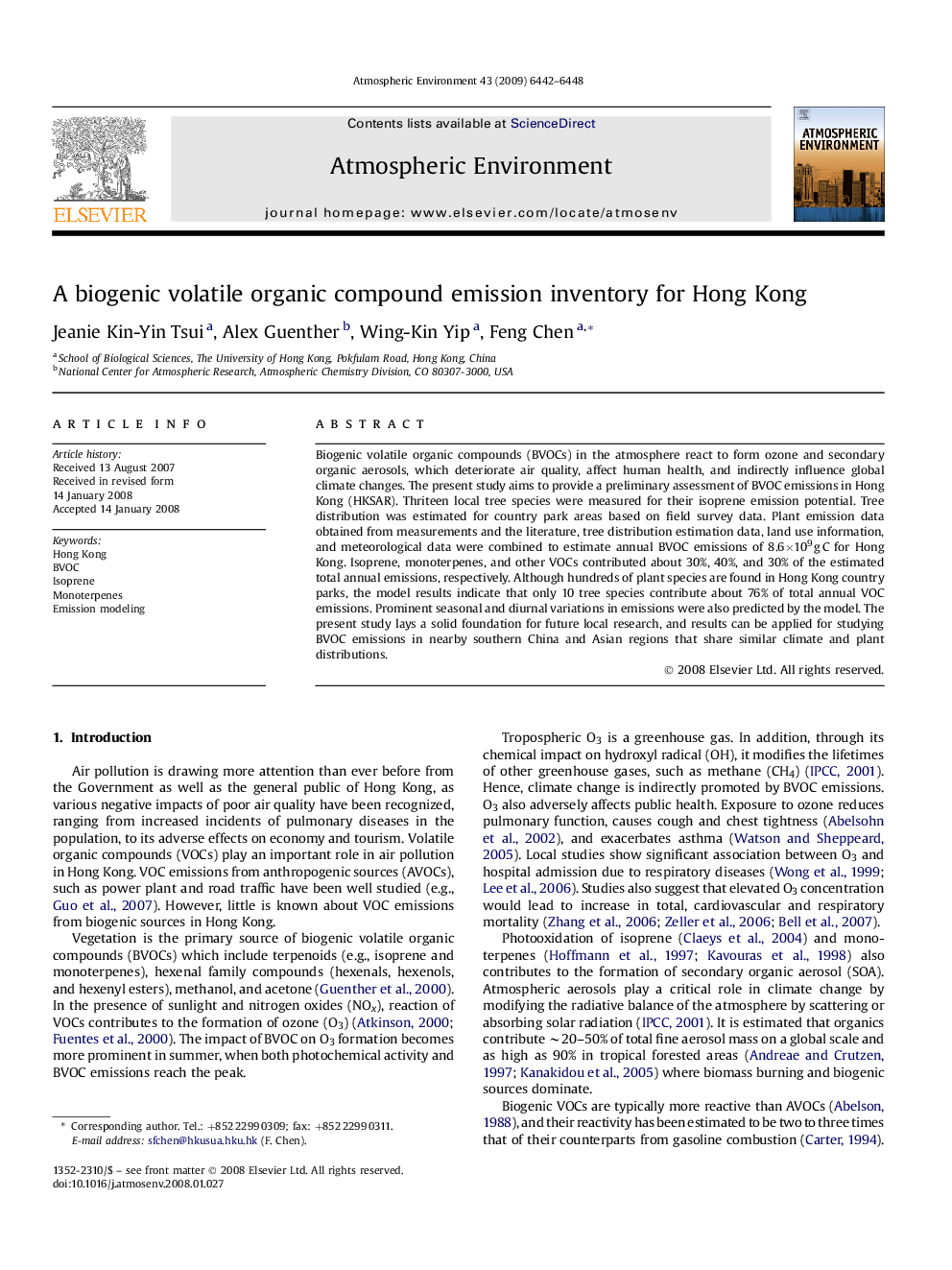| Article ID | Journal | Published Year | Pages | File Type |
|---|---|---|---|---|
| 4441007 | Atmospheric Environment | 2009 | 7 Pages |
Biogenic volatile organic compounds (BVOCs) in the atmosphere react to form ozone and secondary organic aerosols, which deteriorate air quality, affect human health, and indirectly influence global climate changes. The present study aims to provide a preliminary assessment of BVOC emissions in Hong Kong (HKSAR). Thriteen local tree species were measured for their isoprene emission potential. Tree distribution was estimated for country park areas based on field survey data. Plant emission data obtained from measurements and the literature, tree distribution estimation data, land use information, and meteorological data were combined to estimate annual BVOC emissions of 8.6×109 g C for Hong Kong. Isoprene, monoterpenes, and other VOCs contributed about 30%, 40%, and 30% of the estimated total annual emissions, respectively. Although hundreds of plant species are found in Hong Kong country parks, the model results indicate that only 10 tree species contribute about 76% of total annual VOC emissions. Prominent seasonal and diurnal variations in emissions were also predicted by the model. The present study lays a solid foundation for future local research, and results can be applied for studying BVOC emissions in nearby southern China and Asian regions that share similar climate and plant distributions.
